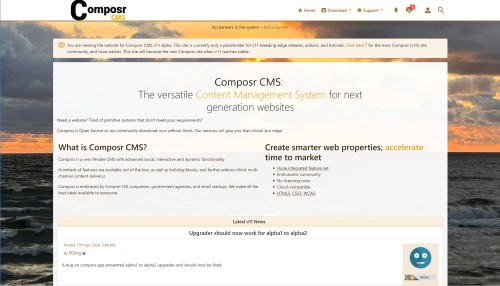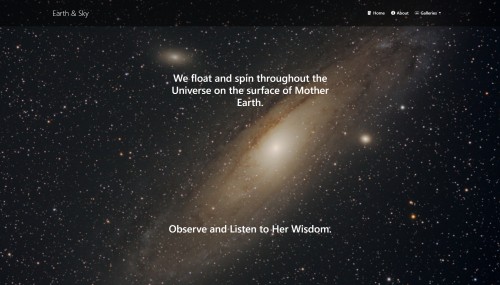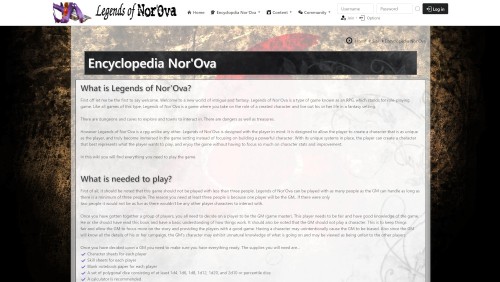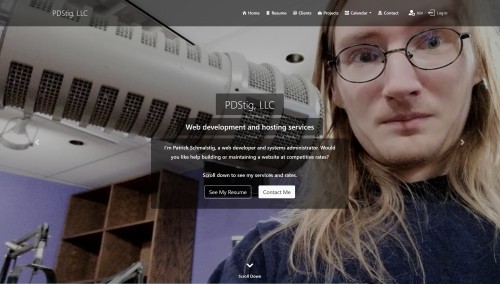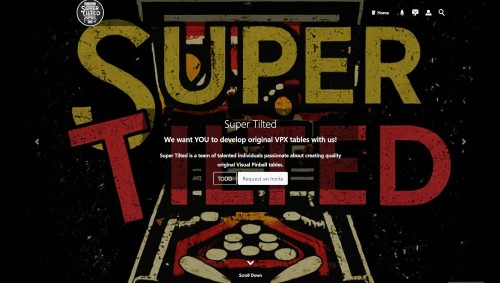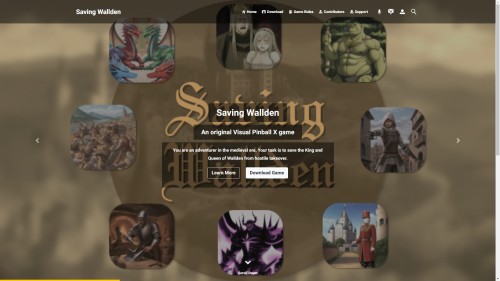Featured Sites: A-Z Index
H
Newest 10 Entries
| Title | Third party integration |
|---|---|
| Icon |  |
| Description | Support for integrating popular forum software: See our download page for a list of supported forums. Share login credentials: Login to the Composr site with the same usernames/passwords as your forum. Share usergroups: Control website access based on someone's forum usergroup. Emoticon support: The emoticons on your forum will also be used on your website. |
| Title | Stay on Top |
|---|---|
| Icon |  |
| Description | (Conversr only) Virtual Forums: Find posts made since you last visited or within a time frame. Remembers your unread posts even if you frequently change computers Recent activity: See what topics you recently read or posted in Unanswered topics: Find which topics have not yet been answered RSS and Atom support |
| Title | Conversr Forums |
|---|---|
| Icon |  |
| Description | The usual: Categories, forums, topics, posts, topic polls, announcements / pinning, sinking, quick reply, topic closing Forum and Topic tracking: Receive notifications when new posts are made on monitored topics and forums. Password-protected forums Present an 'introductory question' which members must answer or agree to before accessing a forum. Full moderator control: Determine who may moderate what forums. Inline personal posts: Whisper to members within a public topic; only those members will see the post. Over 50 bundled emoticons: Also, support for batch importing new ones Multi-moderation: Record and perform complex routine tasks; make post templates for those tasks. Mass-moderation: Perform actions on many posts and topics at once. Post preview: Read a topic's first post directly from the forum-view. Also see the latest posts when making a new post. Highlight posts as ‘important’ |
| Title | Membership |
|---|---|
| Icon |  |
| Description | (These features pertain to Conversr only) Profiles: Browse through and search for members, and view member profiles. Multiple usergroups: Members can be in an unlimited number of different usergroups. They can also ‘apply’ to join new ones. Social networking: Create and browse friendships. Custom profile fields: Allow your members to add extra information which is relevant to your website (or to their subcommunity), and members can set privacy settings on them. Promotion system: Set up a usergroup rank ladder so members advance the ranks through their rank points. Members can view rank on their profile rank tab including unlocked and unlockable privileges. Private Topics: A special kind of private messaging system between 2 or more members. Think 'on-site e-mail inbox'. Invitation-only websites: Restrict registrations from the public; existing members can invite others to join. Allow members to create and manage clubs (personal usergroups). Avatars: Include avatars that members can pick from, or allow members to upload their own. Member signatures, photos, and personal titles Users online: See which members are currently online (unless they logged in as invisible) Account pruning: Find and delete unused accounts, or merge duplicate accounts, based on defined criteria. CSV files: Import and export members using CSV files, including support for automatic creation of custom profile fields and usergroups – great for migrating data |
| Title | Support Tickets |
|---|---|
| Icon |  |
| Description | Users can communicate with staff privately through Support Tickets. Assign to individual staff: Includes the ability for staff members to “take ownership” of raised issues, and for staff to discuss. Allow users to e-mail in their tickets and replies to a designated e-mail address Expanded access granting: Grant third party members access to individual tickets. FAQ integration: Automatically search FAQs before opening a ticket. Multiple ticket types: Set up different types of support tickets, with different access levels and fine-grained ticket notification settings. Anonymous posting: Allow staff to post anonymously or as a designated support operator account so that customers don't always expect the same employee to reply. Merging: If customers open multiple tickets for the same issue, you can merge them. Closing: Let customers close tickets that are now resolved, or do it yourself. Filtering: Filter the tickets you see by status and ticket type. |
| Title | eCommerce and Subscriptions |
|---|---|
| Icon |  |
| Description | Paid membership: Sell access to sections of your website, or offer member privileges. Shopping cart for running an online store Extendable framework: Programmers can easily add new product types to sell, or payment gateways / tax services / shipping providers. Multiple payment gateways: Accepts payments via PayPal or other gateways developers may add, and manual transactions (cash/cheque). Invoicing support: Including status tracking and online payment tracking. Basic accounting support: Input your incoming and outgoing transactions to get a basic ledger, profit-and-loss, and cashflow charting. Currency conversions: Perform automatic currency conversions within your website pages (requires an API key). |
| Title | Featured Content |
|---|---|
| Icon |  |
| Description | Random quotes: Put random quotes (e.g. testimonials) into your design. Awards: Showcase your most popular content, and optionally award the submitter with points. Tags: Set keyword tags for content and display tag clouds. Recent content: Automatically feature links to your most recent content (via main_multi_content block). Show website statistics to your visitors (via stats graphs or page hit counters). Random content: Feature random content from your website specified via a sophisticated filtering language. |
| Title | Newsletters |
|---|---|
| Icon |  |
| Description | Automatically create newsletter issues highlighting your latest content Double opt-in: Prevent false sign-ups by asking subscribers to confirm their subscriptions. Host multiple newsletters: Visitors can subscribe to the ones they want. Flexible mailings: Send out mailings to all members, to different usergroups, or to subscribers of specific newsletters. Welcome e-mails: Send multiple welcome e-mails to new users automatically, on a configurable schedule (Conversr-only). Bounce cleanup: Automatically clean out bounces from your e-mail list. Unsubscribe: Recipients can easily unsubscribe from newsletters through an unsubscribe link provided in the e-mail. Change settings: Newsletter subscribers can change their subscription settings on-site. Drip sending: Prevent overwhelming your mail server or outbound limits. |
| Title | Searching |
|---|---|
| Icon |  |
| Description | Choose what is searchable Boolean and full-text modes Keyword highlighting in results Search boxes to integrate into your website Logging/stats OpenSearch support: Allow users to search from inside their web browser. Results sorting, and filtering by author and date Search within downloads: Including support for looking inside archives. Composr fast custom index: Support full-text searches in instances where your database does not |
| Title | Banners |
|---|---|
| Icon |  |
| Description | Multiple types: Each one can specify its own width-by-height (e.g. skyscraper). Smart banners: Integrate text-banners into your content via keyword detection. Broad media compatibility: Image banners, external banner rotations, and text banners. Determine which banners display most often Run a cross-site banner network Hit-balancing support: A site on a banner network gets as many inbound hits as it provides outbound clicks. Targeted advertising: Show different banners to different usergroups. Track banner performance Use the banner system to display whole sets of sponsor logos or partners Supports Geotargeting Periodic content reviews: Reminders to check (or remove) banners |
Top 10 Entries
| Question | What web technologies does Composr use beyond HTML, CSS, and JavaScript? |
|---|---|
| Answer | Composr relies on a wide range of web technologies (depending on what features and settings you use), including:
|
| Question | How does Composr ensure printed web pages look appropriate? |
|---|---|
| Answer | Composr uses a combination of approaches to ensure printed web pages have a suitable layout:
|
| Question | How can I test my website's compatibility across different browsers and devices? |
|---|---|
| Answer | Testing your website on different browsers and devices can be challenging due to operating system limitations and device availability. Here are some solutions:
|
| Question | What are the recommended desktop settings for viewing a Composr website? |
|---|---|
| Answer | A minimum screen resolution of 1024x768 is strongly recommended for viewing a Composr website. This is the minimum resolution for which the default theme is designed. Using a lower resolution might lead to display issues or an unsatisfactory browsing experience. As of version 11, smaller resolutions will often trigger the mobile layout automatically (responsiveness) to ensure a better UI for smaller displays. |
| Question | How does Composr handle browser compatibility? |
|---|---|
| Answer | Composr aims to support all modern browsers, including the latest versions of Chrome, Firefox, Safari, Edge, and Internet Explorer 11. It is designed to work seamlessly with browsers that automatically update, like Chrome and Firefox. For browsers with manual updates, Composr generally supports the last two releases. While not explicitly supported, Composr will often address bug reports for other popular browsers like Opera, Chromium, and Konqueror. Additionally, Composr strives to provide an accessible experience for text-mode browsers and those designed for users with disabilities. |
| Question | What is CSS and how does it impact website design? |
|---|---|
| Answer | CSS (Cascading Style Sheets) is a language used to describe the visual presentation of a web page written in HTML or XHTML. It controls aspects like:
By separating content structure (XHTML) from visual presentation (CSS), websites become easier to maintain and update. Changes to the design can be made without altering the underlying HTML structure. Composr utilizes CSS extensively for theming, allowing users to manipulate the website's visual appearance. |
| Question | Why is understanding XHTML important for website customization? |
|---|---|
| Answer | XHTML (Extensible HyperText Markup Language) is the language used to structure web page content. It defines the various elements of a webpage, such as headings, paragraphs, images, and links. Understanding XHTML is crucial for website customization because it allows you to:
Composr uses XHTML for its templates, allowing users to extensively customize the website's design and layout. |
| Question | How does JavaScript enhance website interactivity? |
|---|---|
| Answer | JavaScript is a programming language that runs in web browsers, allowing for dynamic and interactive elements on web pages. It enables features like:
Composr relies on JavaScript for its default theme and administrative features. |
| Question | What is the difference between cookies and sessions? |
|---|---|
| Answer | While both cookies and sessions are used for user identification and maintaining state, there are key differences:
Composr uses both cookies and sessions. Session cookies are primarily used for user identification (such as anonymously matching a user to a session in the server database), while persistent cookies can be used for remembering login details if the user chooses. |
| Question | What are cookies and how do they work? |
|---|---|
| Answer | A cookie is a small piece of data that a website stores on a user's computer. It is sent from the user's web browser to the web server each time a page is viewed. Cookies are used for various purposes, including:
There are two main types of cookies:
|


